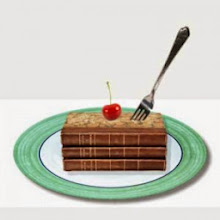It's worth remembering that the stories handed down to us with fairy godmothers and handsome princes also include their fair share of blood 'n' guts. (That thing with the oven in "Hansel and Gretel"--dark, y'all.) The originals, which were often even more awash with gore, weren't meant to soothe little angels to sleep--they were for an audience that thought of children as merely smaller adults. Our current perception of childhood has its roots in the Victorian-era cult of the child, but fairy tales are far older. It is this disconnect that leads to the current debate.
Kids today are definitely more protected than their ancestors. However, fairy tales, along with nursery rhymes, are part of a common storytelling heritage. "Cinderella" for instance is replicated all over the world. (Check out Paul Fleischman's Glass Slipper, Gold Sandal
They also articulate universal fears and preoccupations. Dead parents (mostly mothers, sometimes fathers) simply litter the fairy-tale landscape, leaving their children defenseless. Girls and women are forced into drudgery, boys and men suffer through lack of money and station. They're hanging off the bottom rung of the social strata, about to fall into starvation and homelessness, and surviving only through their wits and the kindness of others. It sounds romantic on the page, but if you've ever been one of these people, you know why it haunted society so badly that it made its way into every story.
Many if not most fairy tales end with a marriage, and you can make all sorts of arguments about socializing young women into believing that the gold ring is where it's at. I'm not disagreeing with you. However, as in Shakesperean comedies, marriage is a sign that the world is right again. The defenseless children have been made into competent adults, have found safety and security, and are ready to make the home they lost so early on. The kingdom is once more prosperous, the baddies have been (bloodily) dispatched, and we're ready to close that dark chapter and move into a new life.
Okay, enough rambling. My point, if I could be accused of having one, is that yes, fairy tales are scary. But so is life. Do we need to tell kids about the wicked stepsisters cutting off parts of their feet to fit into the glass slipper? Depends on the kid. But the world can be a nasty place. There are wolves in the woods, but that just means you've got to keep your wits about you and notice them when they turn up in a flannel nightie.
My, what big teeth you've got, Grandma.





No comments:
Post a Comment